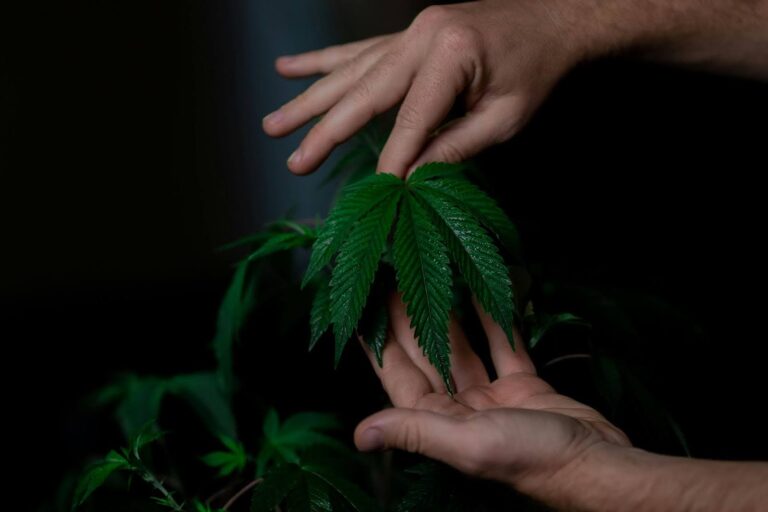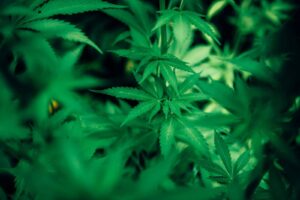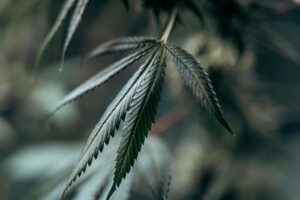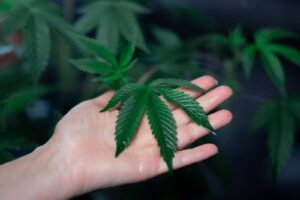Do you ever wonder why some cannabis strains seem to hit harder than others? Maybe it is the curing process. Curing is not the last step; it’s actually an art that can make a difference in your experience with cannabis. It’s not just about drying out your weed; it refines the chemical makeup so that you get optimal potency, flavor, and aroma. In short, curing is the bridge between harvesting and enjoying a truly premium product.
This is when cannabinoids and terpenes mature, stabilize, and reach full capacity. Without it, you’re going to be left with a harsh, less potent cannabis that does not serve the purpose you expect from it. If you’ve ever wondered how professional growers manage to produce quality cannabis repeatedly, then curing is their magic secret. It’s one step that separates the amateur from the expert.
Whether you are a personal grower or a professional, knowledge of the science and art of curing can take your results to the next level. Unlocking psychoactive compounds to preserve terpenes that define a strain’s character, curing is what prevents all your hard work from going to waste. So, let’s get into how curing affects potency and what you need to know to master this essential practice.
The Role of Curing in Enhancing Cannabis Potency
Curing is more than drying weed. It is a delicate process that optimizes the chemical profile of cannabis to make it stronger. It is during curing that the cannabinoids undergo massive transformations that impact the strength and quality of the final product.
Why curing matters:
- The curing process preserves cannabinoids and terpenes, which are responsible for the psychoactive effects and flavor. Without curing, these delicate compounds are prone to degradation. This process enables cannabis to reach its peak potency while enhancing its overall quality.
- Proper curing also eliminates residual chlorophyll, making the smoke smoother and more enjoyable.
Cannabinoid transformations:
- Through curing, compounds become fully matured with time into their most active forms. The THCA precursor is slowly transformed into THC, thereby making the cannabis more potent.
- Other minor cannabinoids, such as CBG and CBN, stabilize during the curing process, ensuring a broad and more balanced cannabinoid profile.
- Stabilization also prevents degradation before the time required, thus making cannabinoids active and effective for extended periods.
Retention of the terpene profile:
- Terpenes are responsible for every strain’s unique aroma and flavor. They also help create the entourage effect, where cannabinoids and terpenes complement each other to enhance the plant’s overall impact.
- By retaining these compounds, curing makes sure that the cannabis is more prosperous and more dynamic in experience.
Extending shelf life:
- Properly cured cannabis can last for months without losing potency or quality, making it suitable for casual users as well as connoisseurs who want to savor their harvest over time.
- Without curing, even the most carefully grown cannabis will deteriorate rapidly and yield a less enjoyable, weaker product.
Curing is a balance of art and science. It requires patience and precision to ensure the final product meets its full potential.
Now, let us understand how cannabinoids transform during curing. Here’s how:
Understanding Cannabinoid Transformations During Curing
The curing process influences the quality of cannabis because it allows key chemical changes to occur. These changes determine the desired psychoactive and overall experience.
Decarboxylation: Converting THCA into THC
Raw cannabis contains THCA, a non-psychoactive compound. Some of the THCA converts into THC, the compound that produces the high, during the curing process. This process starts slowly and continues if the cannabis is heated during consumption. Gradual decarboxylation enables curing to enhance potency without degrading the product, making it smoother and more controlled.
Significance of decarboxylation: Gradual conversion during curing minimizes the loss of THC, preserving the plant’s psychoactive properties. Without curing, raw cannabis remains less effective and potentially harsh.
Impact on THC and CBD Levels
Proper curing stabilizes THC and CBD concentrations, keeping the product’s strength over time. This process reduces the chances that exposure to light, air, or improper storage conditions will degenerate cannabinoids. A well-cured product will retain its strength for months instead of losing it within several weeks.
Degradation prevention: Cannabinoids degrade into less effective forms, such as THC turning into CBN, if curing isn’t done correctly. This reduces the overall impact of the plant and decreases its therapeutic benefits.
So, what is the role of enzymes in cannabinoid development? Let us find out.
Role of Enzymes in Cannabinoid Development
Enzymes in cannabis are active during curing, breaking down chlorophyll and other undesirable compounds. These enzymes are essential in refining the plant’s chemical composition. Here are the roles of enzymes in cannabinoid development:
Chemical purification: Enzymatic activity transforms raw chemical compounds into their most beneficial form. This maximizes major and minor cannabinoid interactions, elevating the plant’s general profile and effectiveness.
Balanced effects: Curing facilitates a greater level of cannabinoids, giving a smoother, better-fitting high without extremes or unpleasant effects.
Terpene synergy: Enzymatic activity also helps preserve terpenes, amplifying the entourage effect where cannabinoids and terpenes work together to heighten the overall experience.
Reduction of unwanted compounds: Enzymes neutralize sugars, starches, and other undesirable elements, improving the flavor, burn quality, and smoothness of the final product.
Long-term stability: Proper enzymatic breakdown during curing ensures the product remains potent, flavorful, and effective over extended storage periods.
Curing is that critical juncture in which science and nature blend together for the betterment of the potency and quality of cannabis.
Now that we know much about cannabinoid curing, let us find out how curing conditions affect potency.
How Curing Conditions Affect Potency
The environment in which you cure your cannabis directly affects its potency. This is not merely leaving your harvest to dry but actually creating a controlled environment that allows cannabinoids and terpenes to develop and stabilize fully. Poor conditions can allow the degradation of essential compounds, while optimal conditions preserve and enhance the quality of your cannabis. Mastering such environmental factors would ensure the peak potency and flavor that your cannabis brings to both your senses. Here are key factors to note:
1. Temperature and Humidity
Range: The ideal temperature between 60-70°F and humidity levels of 55 to 65% are crucial for cannabis’s potency.
Why It Matters: Temperature and humidity levels determine the preservation of cannabinoids and terpenes, which are responsible for the flavor, aroma, and potency of cannabis. High humidity encourages the growth of mold and microorganisms, which can break down cannabinoids and compromise their potency.
Meanwhile, overly dry conditions allow cannabinoids and terpenes to degrade and reduce their product’s potency. Balancing these aspects is necessary as you want to have it preserved for maximum effect of the desired amount over some time.
Monitoring Devices: Check your Hygrometers and Thermometers continuously during curing conditions. More efficiently, automated systems help maximize curing by creating uniform environments and reducing errors that cause potentialities in this way.
2. Light Exposure
Light Control: Proper light control is essential to maintaining cannabis’s effectiveness. Light, specifically UV rays, degrades THC and other cannabinoids by reducing their potency. Furthermore, light speeds up the evaporation of terpenes, chemicals responsible for cannabis’s unique tastes and aromas. The outcome? Cannabis has less potency, less flavor, and less smell.
Storage Tip: Keep your cannabis potent and quality in check by using containers, mainly to keep it away from light during curing and storage. Also, keep an optional environment to preserve your cannabis.
UV Protection: For added preservation, consider using containers with UV-blocking technology. These containers provide an extra layer of protection, safeguarding cannabinoids and terpenes from the ravaging effects of light.
3. Slow and Steady Drying
Why it matters: Rushing the drying process compromises potency and quality. Quick drying can lock in undesirable flavors and leave cannabis harsh, reducing its overall enjoyment. Gradual drying ensures cannabinoids and terpenes remain intact, leading to a more potent and flavorful product.
Best practices: Dry cannabis in a controlled environment with consistent airflow to avoid mold growth and preserve its chemical profile. This step rewards patience with a higher-quality final product.
Common mistakes to avoid: Over-drying causes cannabis to become brittle and reduces its terpene content, while under-drying increases the risk of mold and uneven curing.
4. Airflow Control
Why it matters: Even airflow prevents mold and promotes uniform drying. Dead air pockets can create hot spots or humidity pockets that invite microbial growth.
How to achieve: Use mesh racks or controlled air circulation systems to maintain consistent airflow without exposing cannabis directly to harsh drafts, which could cause uneven drying or loss of terpenes.
5. Curing Containers
Best Choice: Glass containers are the best because they are reusable. This means that cannabinoids and terpenes are more likely to be preserved in glass. Plastic should be avoided because chemicals may leach or moisture exchange may be allowed, degrading the product.
Storage tip: Ensure containers are airtight but allow for periodic opening (burping) to release excess moisture and introduce fresh air.
6. Burping Technique
Why it matters: Opening jars regularly helps maintain a steady environment by reducing excess moisture and allowing in fresh air. This means that the possibility of growing mold is removed, keeping cannabinoids and terpenes intact.
How often: In the first two weeks of curing, burp the jars once or twice daily. When the humidity has stabilized, reduce the frequency to once every few days.
7. Consequences of Microbial Balance
Good microbes: Correct curing promotes good microbes to grow and proliferate. This fine-tunes the chemical nature of cannabis. It also adds quality, flavor, and smoothness to the end product.
Risk mitigation: Humidity and airflow regulation are the keys to risk management in harmful microbes, so your cannabis remains safe and potent.
8. Curing Duration
Ideal timeline: Curing periods of 4-8 weeks or more allow cannabinoids and terpenes to stabilize fully, resulting in a smoother, more flavorful, and potent product. Longer curing can amplify the strain’s unique characteristics.
Don’t rush: Rushed curing sacrifices these benefits, leaving cannabis less effective and enjoyable.
9. pH Balance
Why it matters: Monitoring and maintaining an appropriate pH level during curing can influence the final quality, including the aroma and taste of the cannabis. Balanced pH levels help reduce harshness and improve the overall experience.
Each of these factors has a role in the curing process. Careful control over temperature, humidity, light exposure, and drying speed can help maximize the potency and quality of your cannabis.
Are you struggling with curing cannabis, setting the proper temperatures, and maintaining regular monitoring? PlanaCan enables you to track your cannabis yield in real time, ensuring you capture key decisions like curing and temperature settings while seamlessly monitoring progress. With all your data consolidated in one place, you can fine-tune your processes, avoid past mistakes, and refine your strategies for higher yields and greater profits.
So, what is the effect of extended curing on potency? Let us find out.
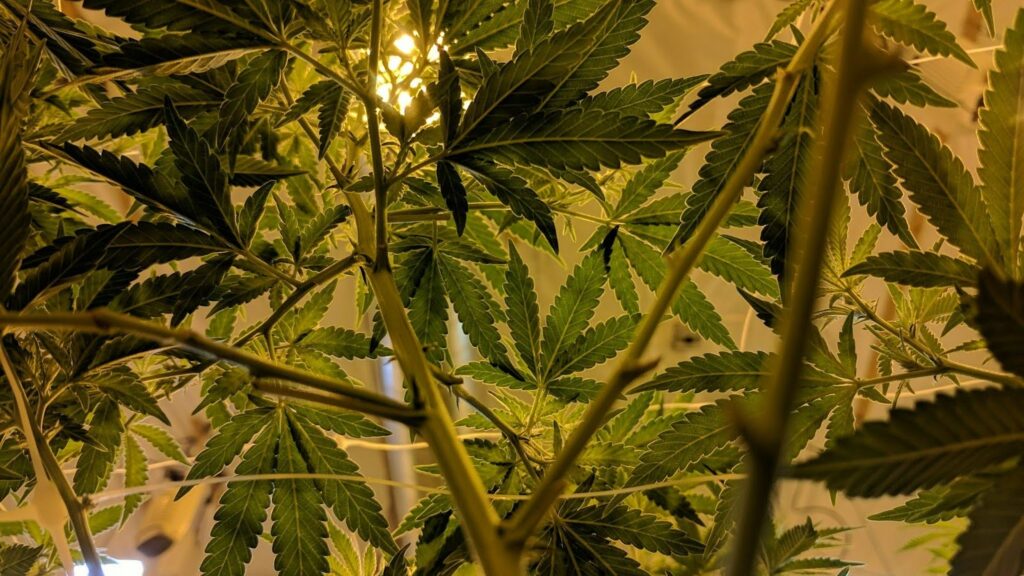
The Effect of Extended Curing on Potency
Extended curing takes your cannabis to the next level. While basic curing lasts 2-4 weeks, prolonged curing, up to several months, further enhances the chemical complexity of the plant. This process is very meticulous and refines the cannabinoid and terpene profiles, leading to a superior final product in terms of potency, flavor, and overall experience. Here’s how it affects the curing:
1. Increased Potency
Stabilization: Longer curing time allows the cannabinoids to settle and fully mature. In turn, this produces a more consistent and potent experience since the chemical makeup of the plant will mature over time.
Full Ripening: Cannabinoids such as THC and CBD ripen during longer curing processes, and the cannabis will be more potent for recreational and medicinal uses.
Development of Minor Cannabinoids: Extended curing promotes the development and stabilization of minor cannabinoids like CBG, CBC, and CBN, which contribute to a broader therapeutic and psychoactive spectrum.
2. Long-lasting Effects
Conversion of Cannabinoids: Extended curing encourages complete cannabinoid conversion, such as the slow transformation of THCA into THC and other beneficial cannabinoids. This ensures you get the most out of your cannabis.
Refined High: A longer curing time leads to a more balanced and refined psychoactive experience, reducing harshness while enhancing enjoyment.
Improved Chemical Interactions: Longer curing times encourage optimal interactions between cannabinoids and terpenes, which leads to a more dynamic and nuanced effect.
3. Terpene Amplification
Preservation and Development: Longer curing times allow terpenes to stabilize and even increase in aroma and flavor. This enhances the sensory experience and the entourage effect, where terpenes and cannabinoids work synergistically to improve potency.
Customization: Longer curing can bring out different terpene profiles, allowing growers and users to tailor the flavor and effects to their preferences.
Better Aroma: Degradation of unfavorable compounds such as chlorophyll brings out the strain’s natural aromas, increasing its overall appeal to the senses.
4. Higher Smoothness and Combustion Quality
Removal of Residual Compounds: Longer curing continues to break down chlorophyll and other compounds left behind, eliminating bitterness and making the final product feel smoother.
Better Burn Quality: Well-cured cannabis burns more evenly and cleanly, making it ideal for smoking or vaping without unpleasant residue or irritation.
5. Longevity and Preservation
Extended Shelf Life: Cannabis cured over several months retains its potency, flavor, and aroma for extended periods, making it more suitable for long-term storage.
Resistance to Degradation: Properly cured cannabis is less prone to degradation from environmental factors, preserving its quality over time.
Are you struggling to keep up with your cannabis growth requirements? PlanaCan‘s interactive calendar helps you plan your cannabis yield for months ahead while efficiently managing daily tasks. Adjust schedules as needed and keep all cultivation information in one place, ensuring no task is missed.
There are several steps to cure cannabis. Burping is one of them. Let us learn more about it.
Burping: An Essential Step in Curing Cannabis
Burping is a necessary curing process that helps preserve quality and potency. It involves periodically opening the storage containers to flush out excess moisture and allow fresh air to circulate. This is an essential step in curing, even during prolonged periods. Here’s how:
Air Exchange: Burping prevents mold and maintains the right curing environment by controlling moisture levels. Without it, moisture can build up, and your buds will ruin.
Humidity Redistribution: Every burping session allows the humidity to balance within the container, ensuring even curing throughout the cannabis batch.
Prevention of Stale Air: Fresh air circulation prevents the buildup of stale odors caused by trapped moisture or gases, therefore keeping the cannabis fresh and fragrant.
Long-term benefits: Proper burping during extended curing conserves cannabinoids and terpenes while preventing the establishment of stale odors.
Terpene Retention: This process prevents the degradation of terpenes due to over-humidity, ensuring the full aroma and flavor profile of the cannabis.
Burping Tools: Specialized lids with an airlock system can automate the burping process by allowing gas to escape while maintaining humidity, reducing the need for manual intervention.
Timing adjustments: After some time, the frequent burping becomes less and less necessary. Less frequent burping will allow the curing of cannabis to be consistent but not lose chemical integrity.
Visual and Sensory Checks: When you get one burp every time, examine the cannabis for mold growth, uneven drying, or even an excessively chlorophyllous smell. Catching these problems earlier will prevent bigger ones from arising.
So, how is terpene preservation linked to potency? Let us discuss.
Terpene Preservation and Its Link to Potency
Terpenes, the compounds that give cannabis its flavor and aroma, also contribute to its potency. Retaining terpenes during curing improves both the experience and the effects of cannabis by maintaining its unique chemical profile. Here’s how:
1. Flavor and Strength
Entourage Effect: Retained terpenes improve the entourage effect, a phenomenon in which cannabinoids and terpenes work synergistically to amplify potency. This interaction enhances cannabis’s therapeutic and psychoactive benefits.
Complexity of Flavor: Protected terpenes result in deeper and more complex flavors, which is a better experience for the consumer’s senses.
2. Variations in the Conditions
Tailoring Profiles: Different curing techniques can affect a terpene profile, allowing growers and users to customize the flavor, aroma, and effects of marijuana to their preference.
Environmental Controls: The temperature, moisture, and air circulation in curing have direct effects on retained terpenes. One example is that lower temperatures during curing prevent the volatile evaporation of terpenes, thus preserving it.
Do you find it challenging to maintain the perfect curing environment for your cannabis? PlanaCan‘s interactive calendar makes it easy to manage temperature, moisture, and air circulation—the factors that directly impact terpene retention. You can plan your yield months in advance while efficiently handling daily tasks like adjusting curing conditions to preserve terpenes. The calendar also keeps all cultivation information in one place, ensuring no detail is missed for optimal results.
3. Long-Term Benefits
Extended Freshness: Terpene preservation ensures the cannabis remains fresh and aromatic over extended storage periods, enhancing both flavor and effectiveness.
Increased Potency: A high terpene content ensures that cannabis delivers more potent and more nuanced effects, which contributes to its overall quality.
Practical Tips for Terpene Preservation
Optimal Conditions: Maintain curing temperatures between 60-70°F and humidity at 55-65% to minimize terpene loss.
Minimal Handling: Avoid over-handling during curing to protect delicate trichomes that contain terpenes.
Light Protection: Wrap cannabis in opaque, light-proof containers to prevent degradation through light exposure of terpenes.
Slow Curing: Slow curing helps stabilize and integrate cannabinoids with terpenes, raising the product’s overall potency and aroma intensity.
Now that we know everything about curing cannabis, let us understand the challenges that occur in maintaining the potency through curing.
Challenges in Maintaining Potency Through Curing
Curing isn’t foolproof, and even minor mistakes can lead to significant potency loss. Achieving optimal curing requires precision and attention to detail, as various factors can disrupt the delicate balance needed to preserve cannabinoids and terpenes. Here are common pitfalls to avoid:
1. Incorrect Humidity Levels
Too Much Moisture: High humidity promotes mold growth, which can destroy an entire harvest of cannabis. Proper humidity inhibits microbial activity and preserves cannabinoids and terpenes.
Over-drying: Extremely low humidity can degrade terpenes and cannabinoids, making cannabis less potent and flavorful. The key is balance to preserve the plant’s chemical integrity.
Monitoring Tools: Hygrometers are essential to ensure proper humidity levels. They should be used regularly to check and adjust the environment within curing containers.
Regular checks and adjustments ensure an optimal environment for your cannabis. PlanaCan offers real-time yield monitoring. It tracks every harvest, records key decisions, and analyzes their impacts. All data is in one place, so it’s easy to identify successful methods and avoid past mistakes while refining the processes to maximize yields and profits.
2. Unbalanced Burping
Uneven Cure: Failure to burp containers will result in an uneven cure, where some buds retain too much moisture while others dry out too much. This will negatively impact potency and flavor.
Stale Air: Trapped gases from a lack of air exchange can produce unpleasant odors and affect the aroma of your cannabis.
Schedule Adherence: To ensure the environment stabilizes correctly, have a consistent burping schedule, especially during the first few weeks of curing.
3. Over-Drying
Locked-In Undesirable Characteristics: Allowing cannabis to dry out entirely before curing can result in harsh, brittle buds that lack potency and flavor.
Loss of Terpenes: Over-drying leads to the evaporation of terpenes, which are essential for the flavor, aroma, and overall effectiveness of cannabis.
Prevention Tips: Dry conditions should be watched closely, and cannabis should be moved to curing containers when it reaches an ideal dryness level to the touch but is still pliable.
4. Environmental Fluctuations
Temperature Fluctuations: Sudden changes in temperature can degrade cannabinoids and terpenes, which can lead to a loss in the quality of your cannabis.
Humidity Fluctuations: Depending on the direction of the fluctuation, humidity fluctuations can lead to mold growth or over-drying. Conditions should be consistent during the curing process.
5. Mismanagement of Buds
Bruised Trichomes: Overhandling during the curing process can bruise the vulnerable trichomes, which contain most of the cannabinoids and terpenes. Therefore, minimize handling and be gentle when handling buds.
Risk of Contamination: Handling cannabis with bare hands places oils and bacteria that can create adverse reactions in the cure process.
By avoiding those pitfalls and maintaining precise control over the curing environment, you will be able to really bring out the potency, flavor, and overall quality of cannabis.
Conclusion
The curing of cannabis is both an art and a science. It is keeping ideal conditions and extending curing periods for much higher potency, flavor, and quality of your marijuana. Proper curing locks down the cannabinoids and terpenes that make up your cannabis, enhancing the experience for its users. However, curing does not solve all problems involved in cultivation, particularly the handling of multiple cycles. This is where PlanaCan steps in, revolutionizing your cultivation practices by streamlining planning, organization, and workflow to ensure consistency, higher quality, and optimized yields.
PlanaCan simplifies task management by offering customizable templates that automate cultivation workflows from planting to harvest. It also provides clear timelines for planning and tracking tasks, enabling growers to adjust schedules, manage daily activities, and centralize information. This ensures streamlined processes, enhanced efficiency, and no overlooked tasks.
With PlanaCan’s tools, growers will focus more on producing the finest cannabis and less on managing their workflow. This is whether it is harvesting at maximum yield, streamlined processes, or consistent quality across harvests, as PlanaCan will get you to your goal with support.
Schedule a free call today and discover how PlanaCan will change your cannabis cultivation techniques.

